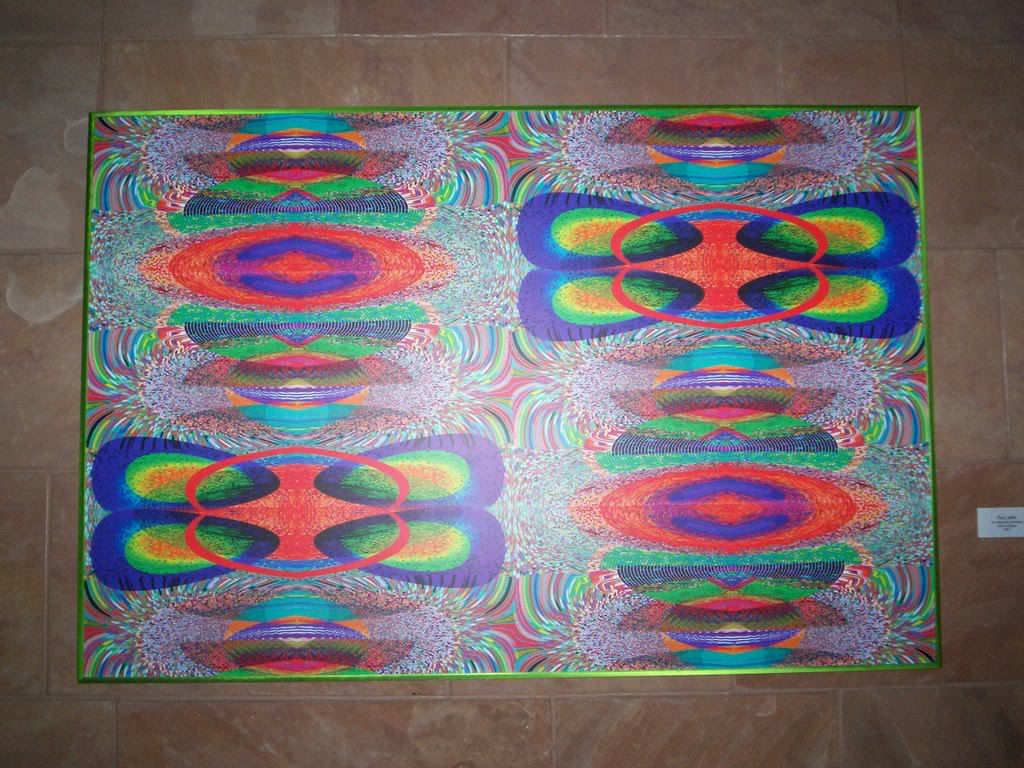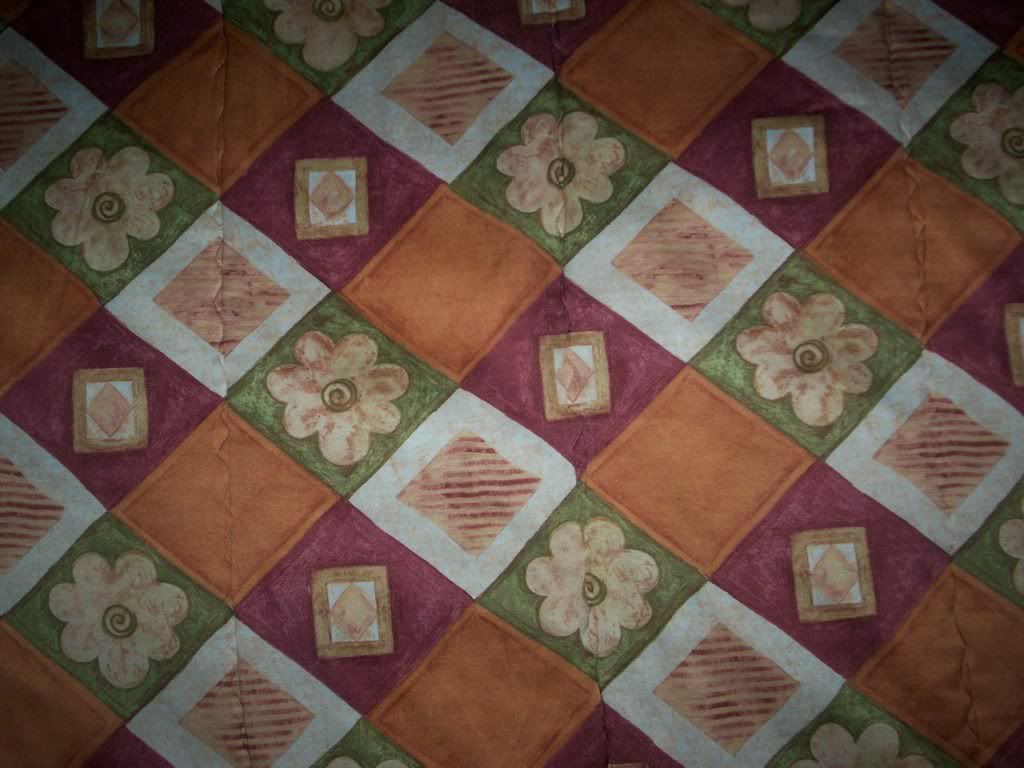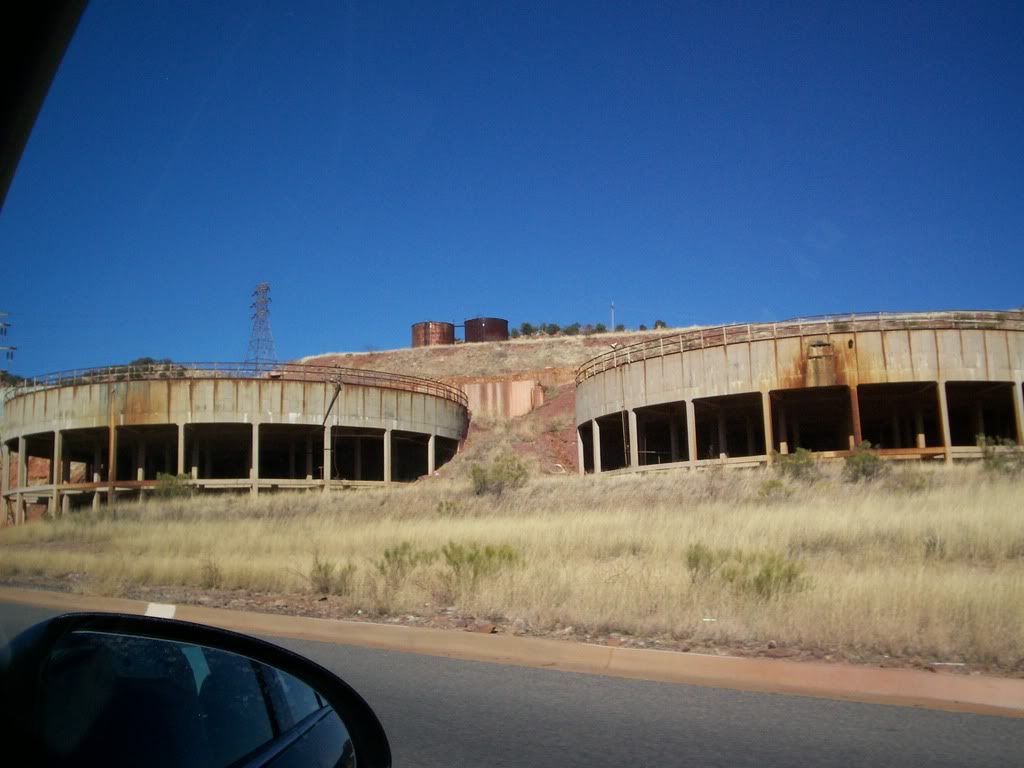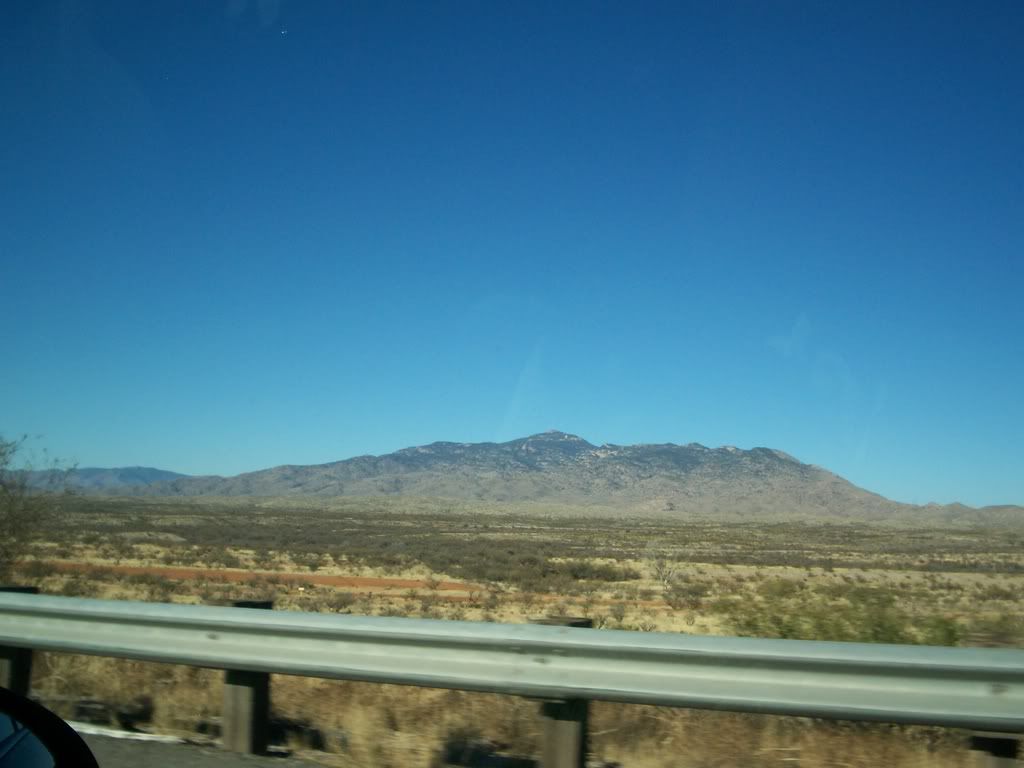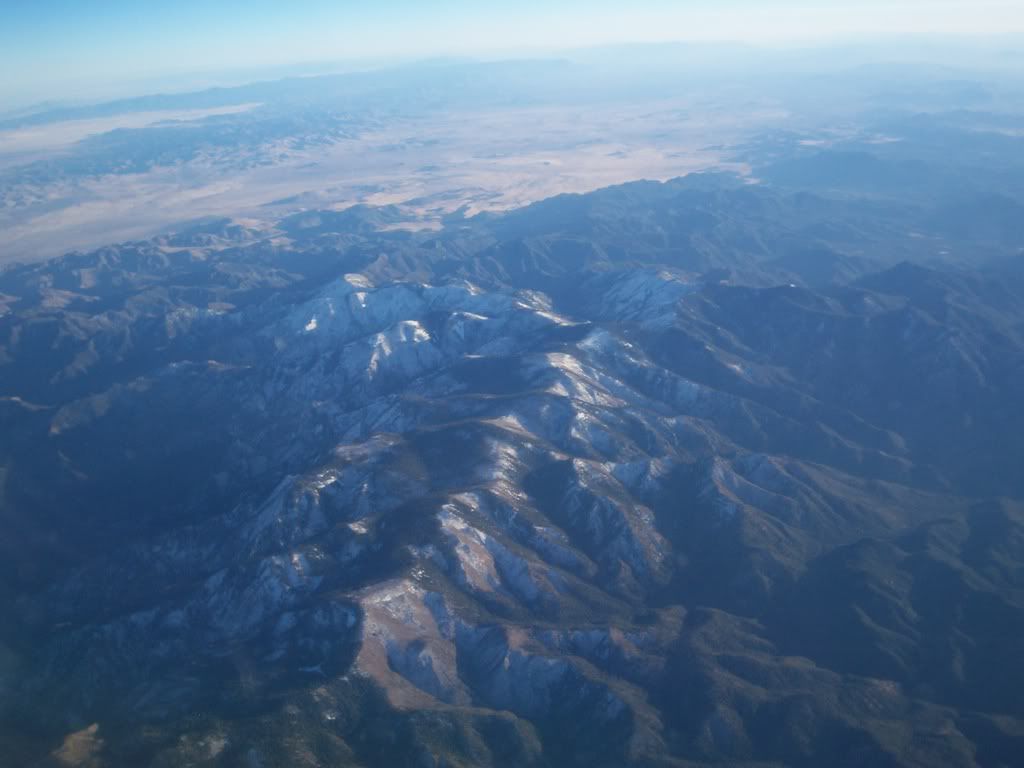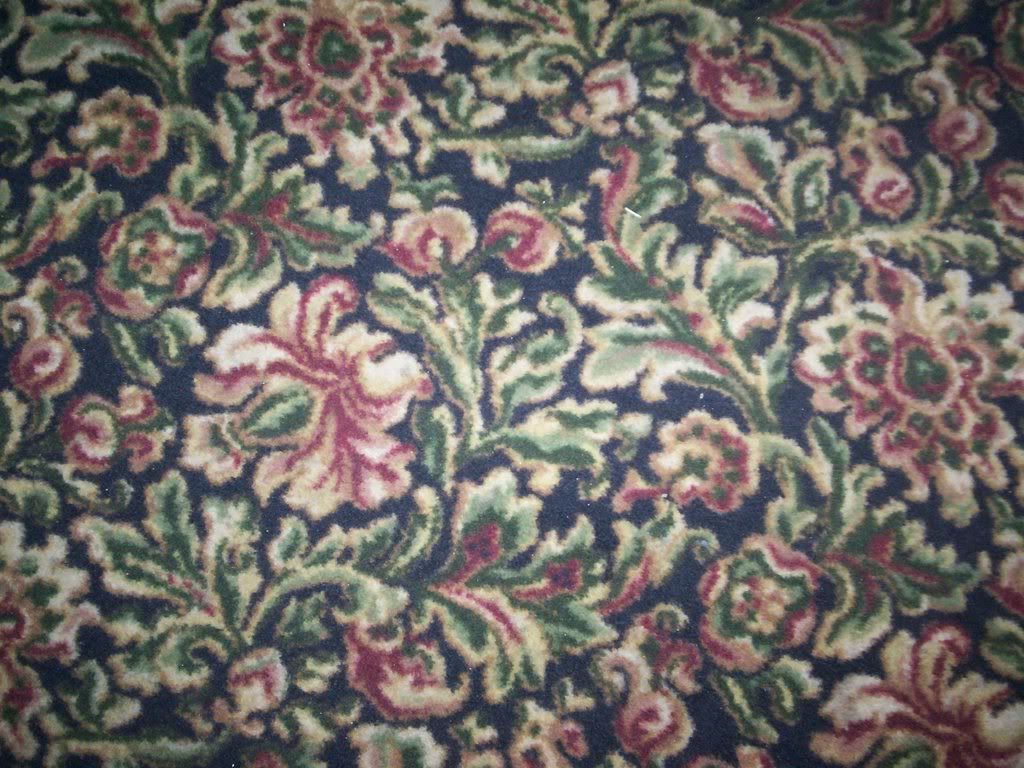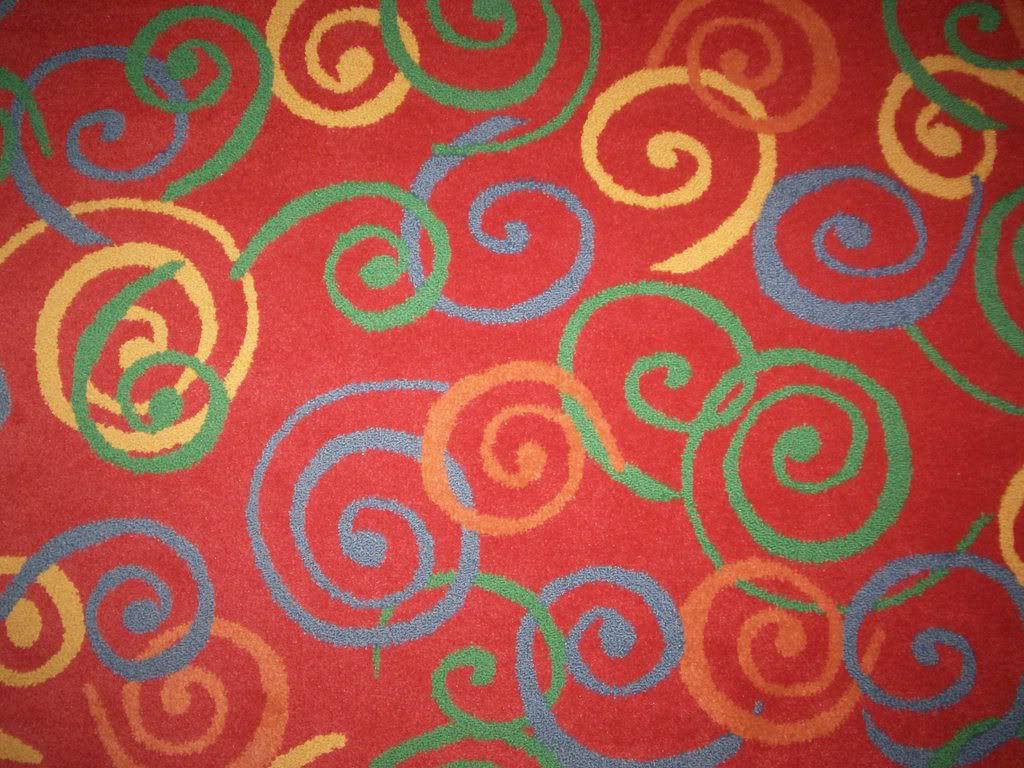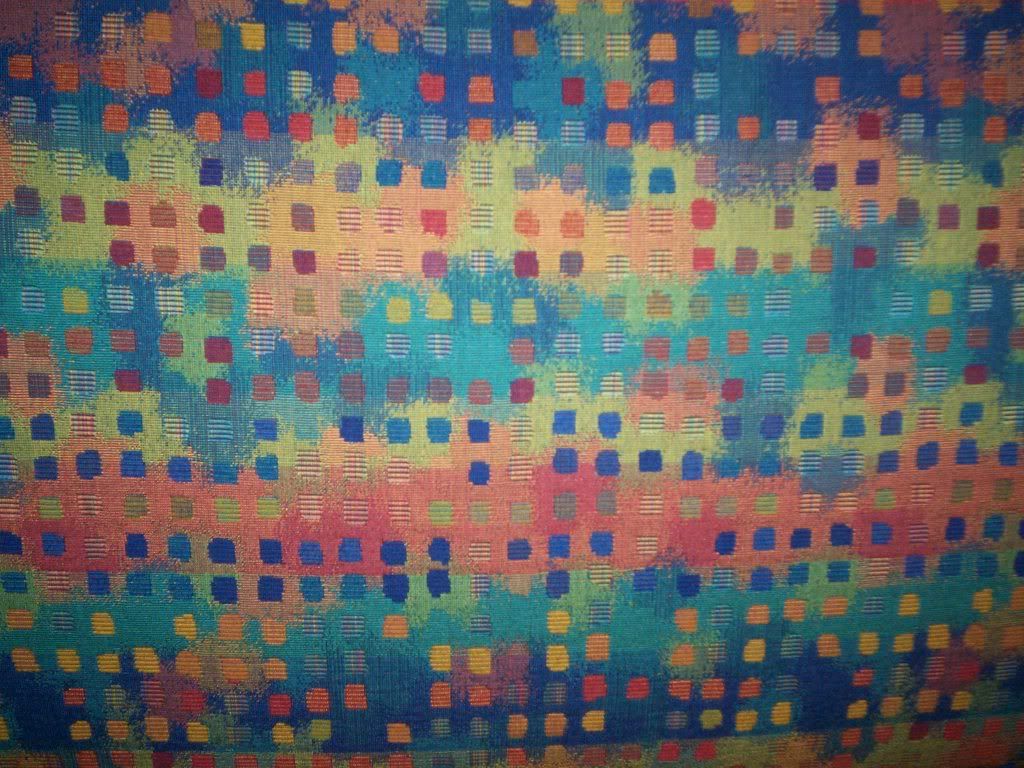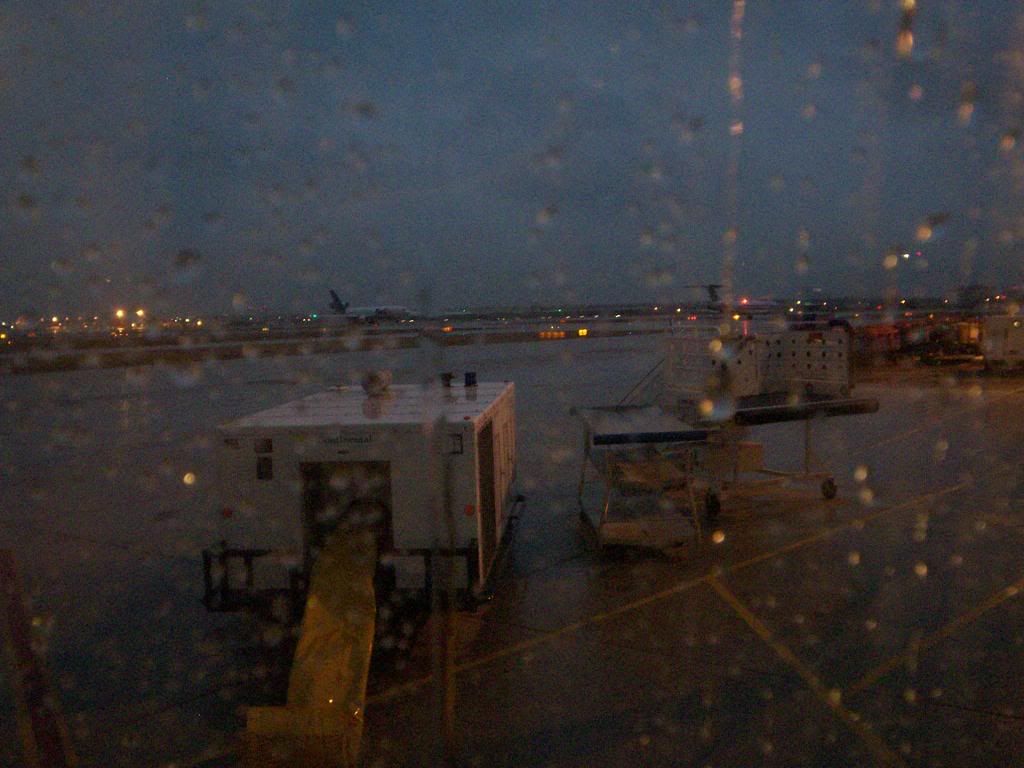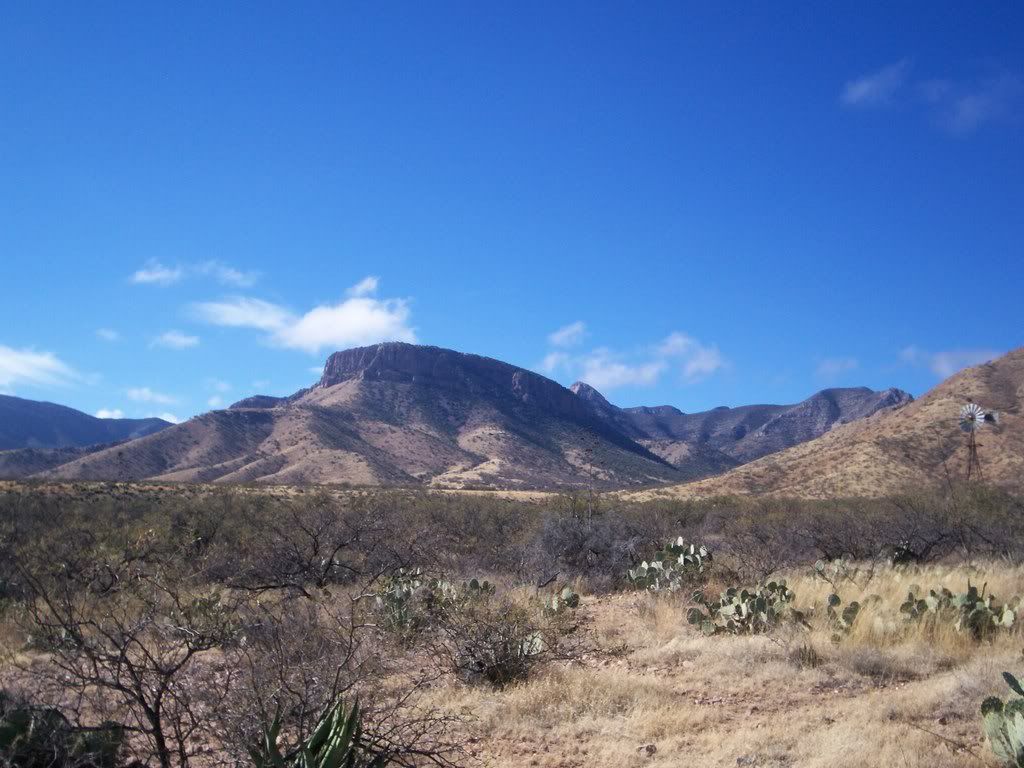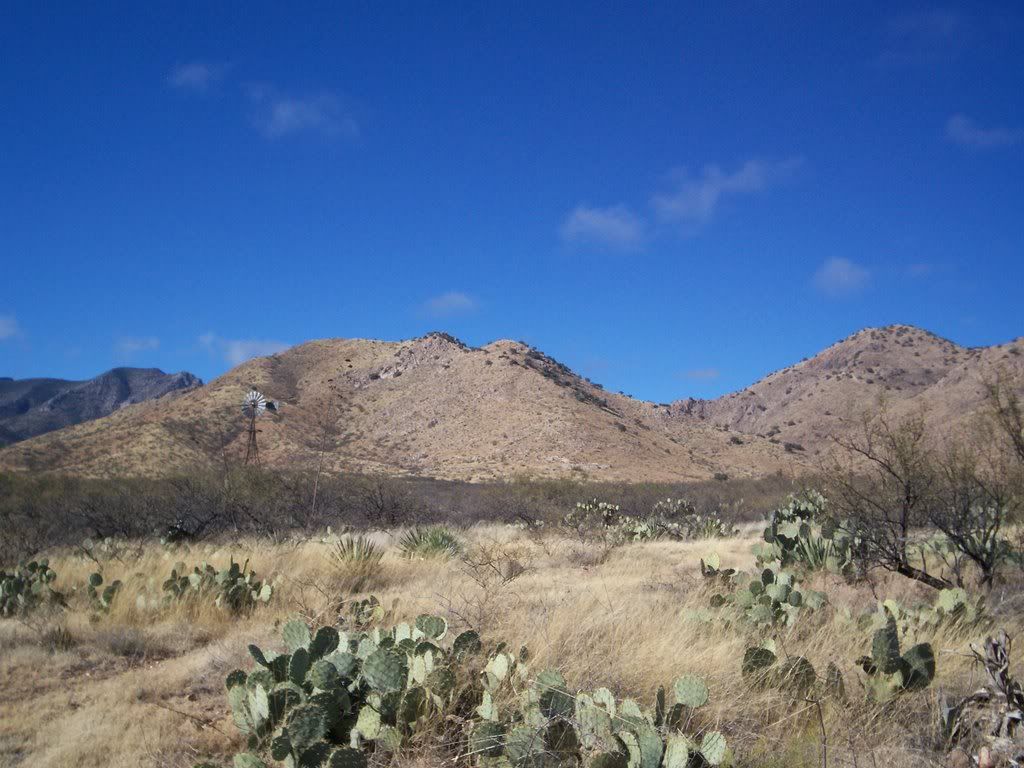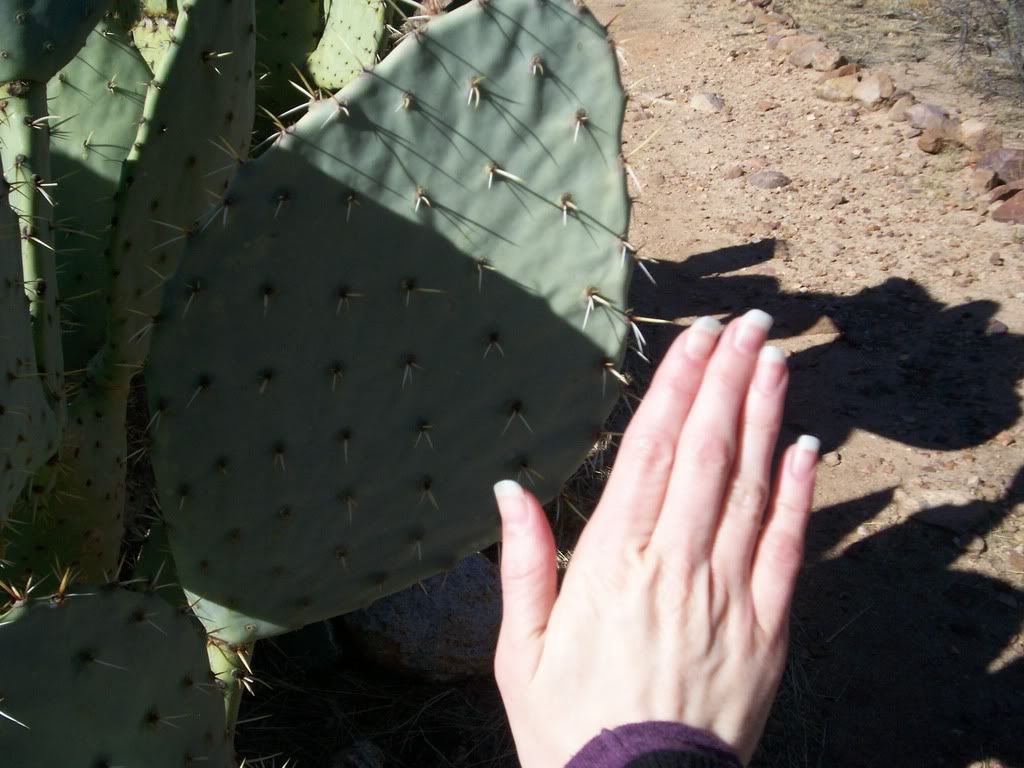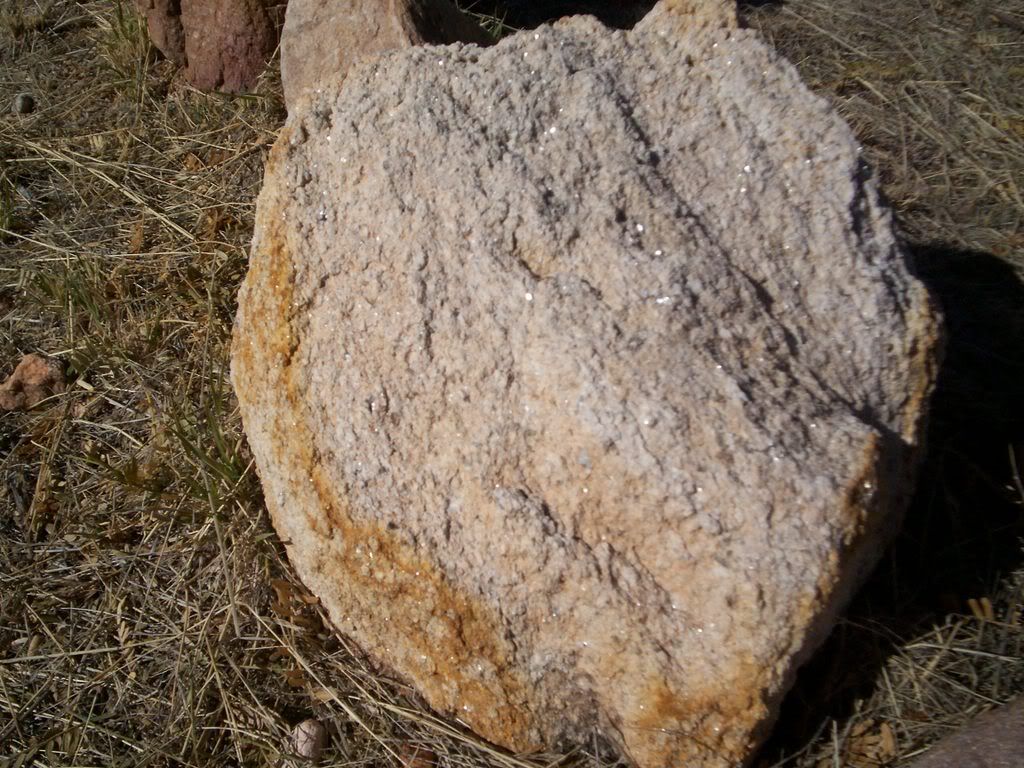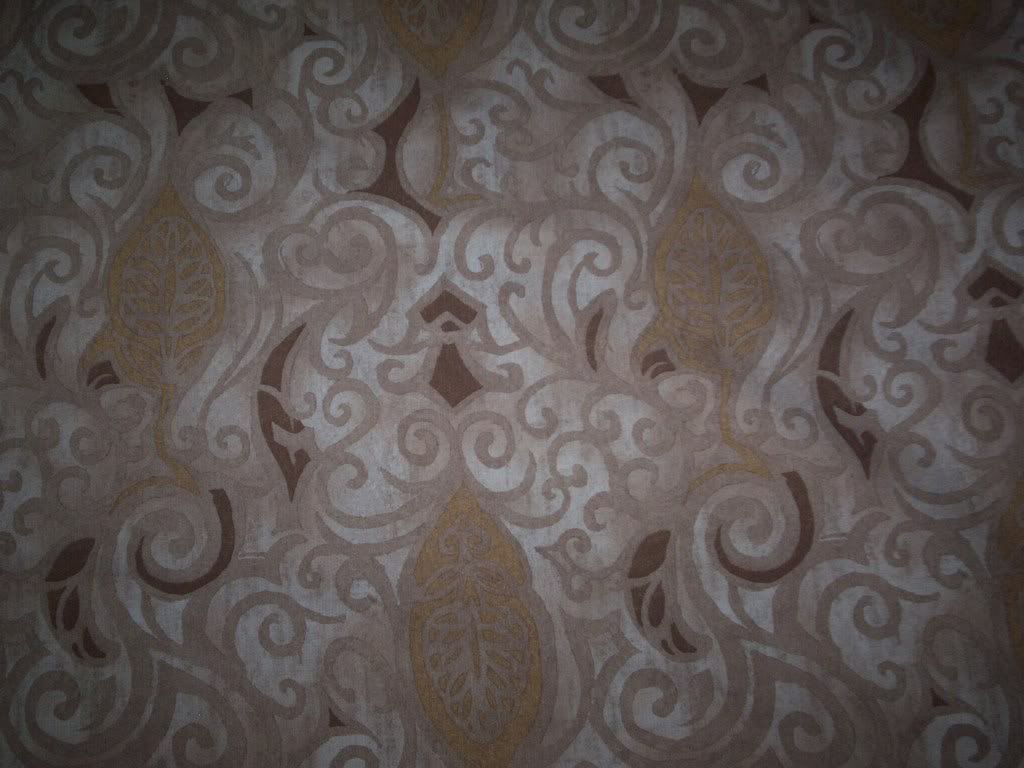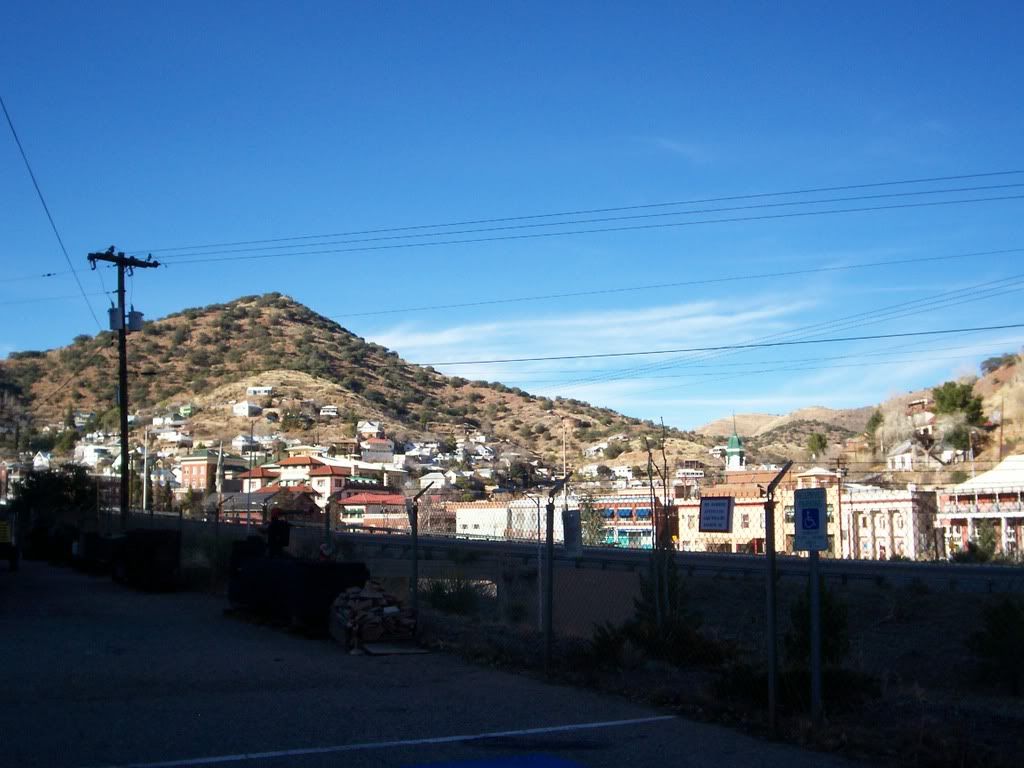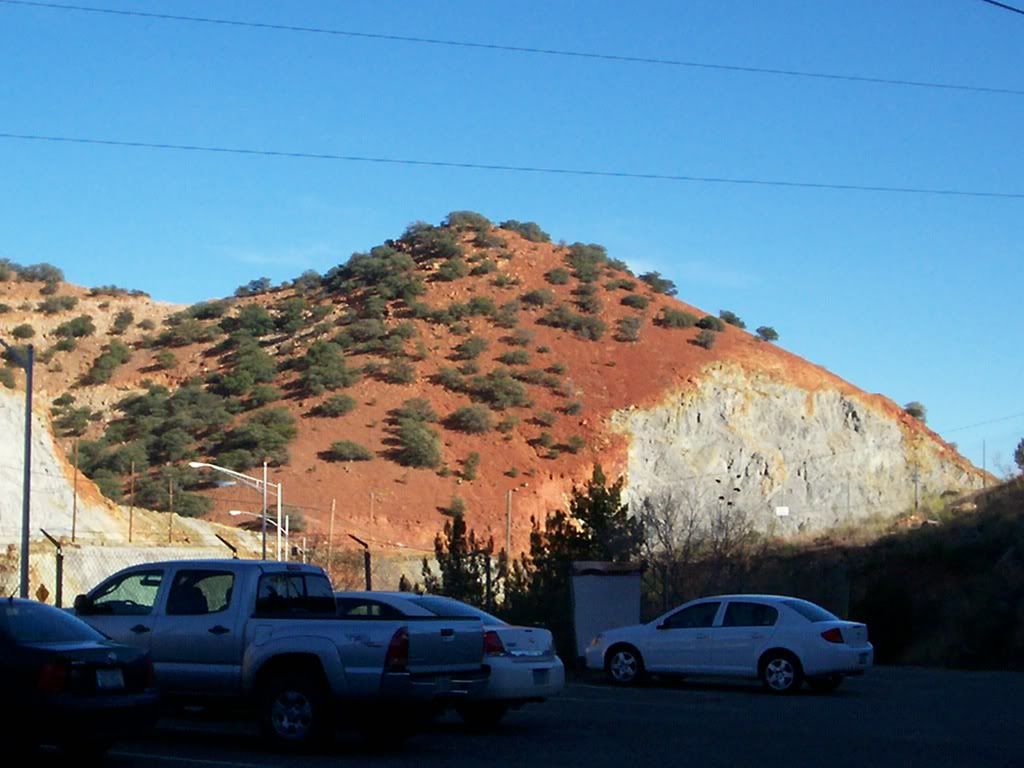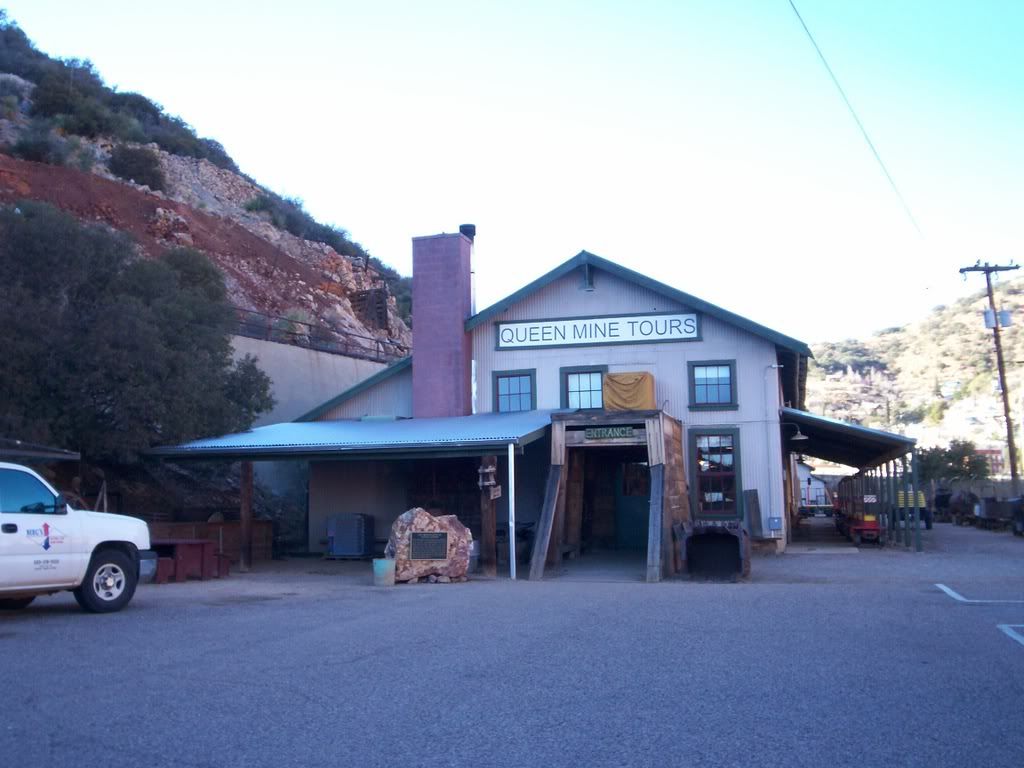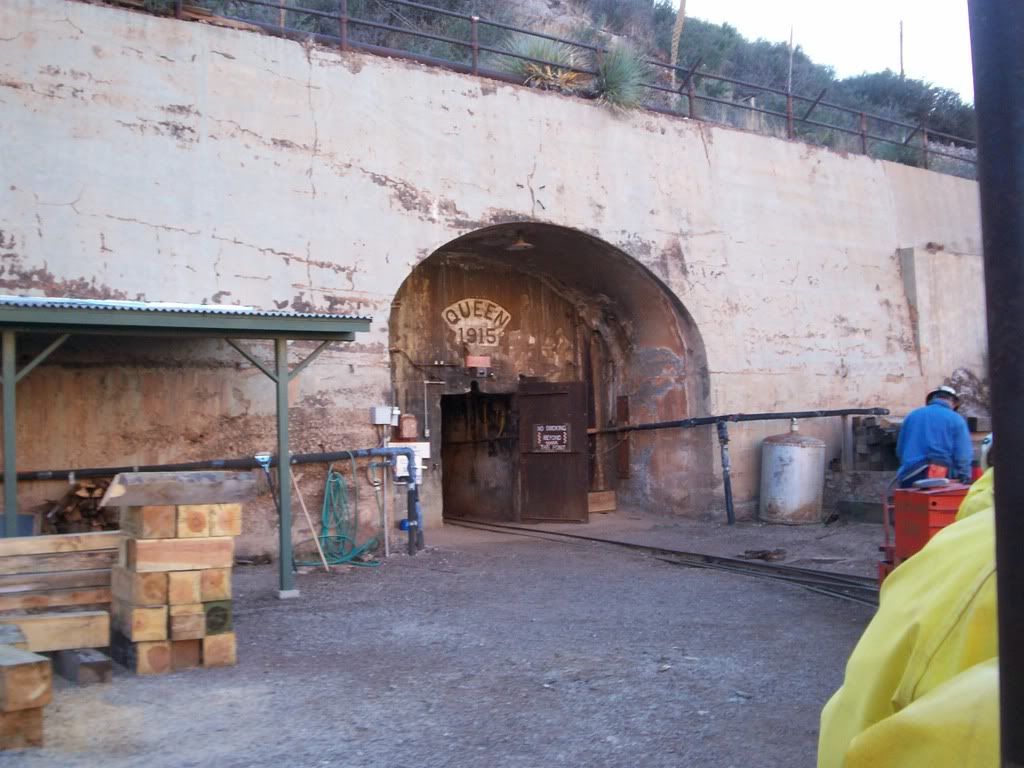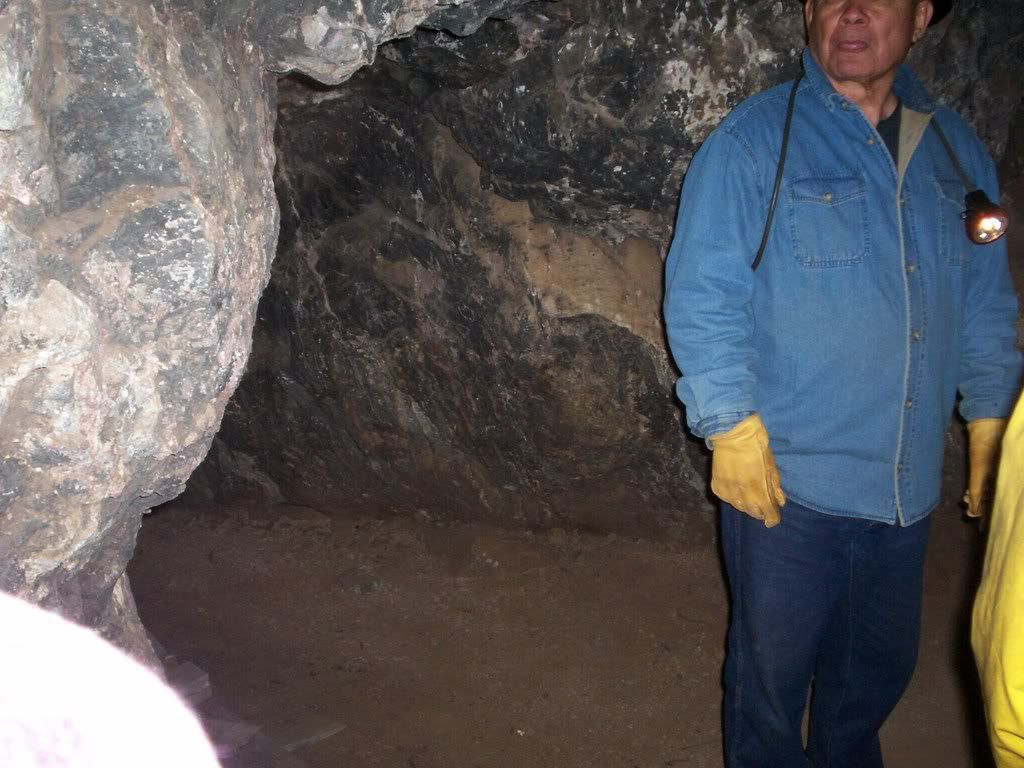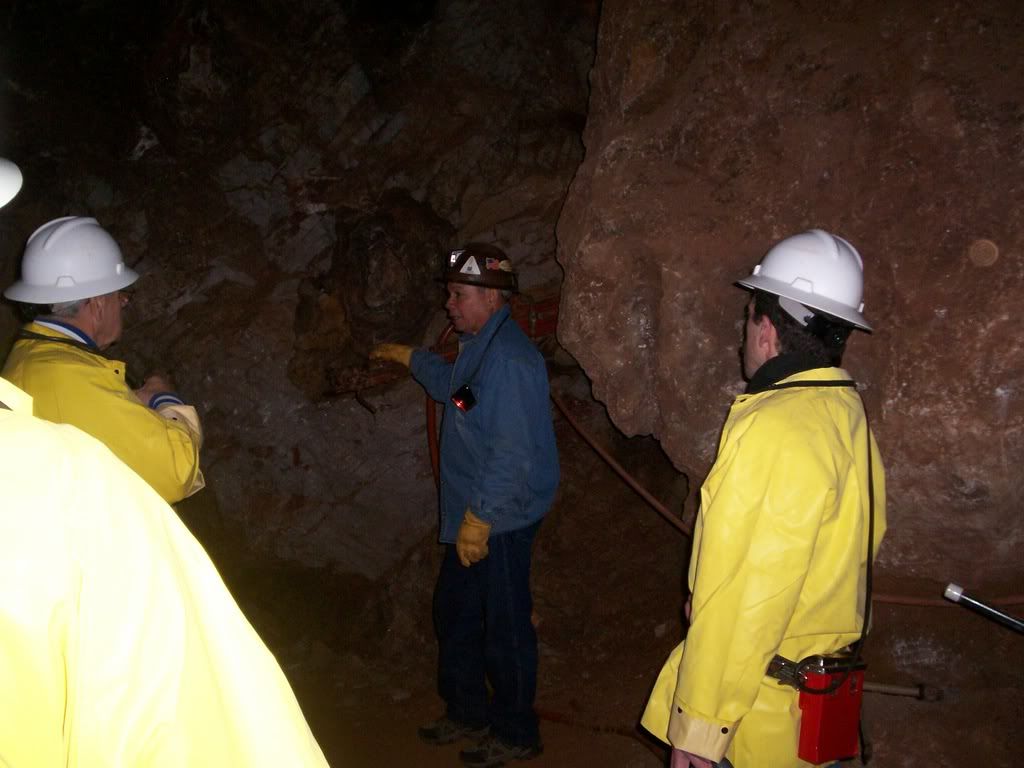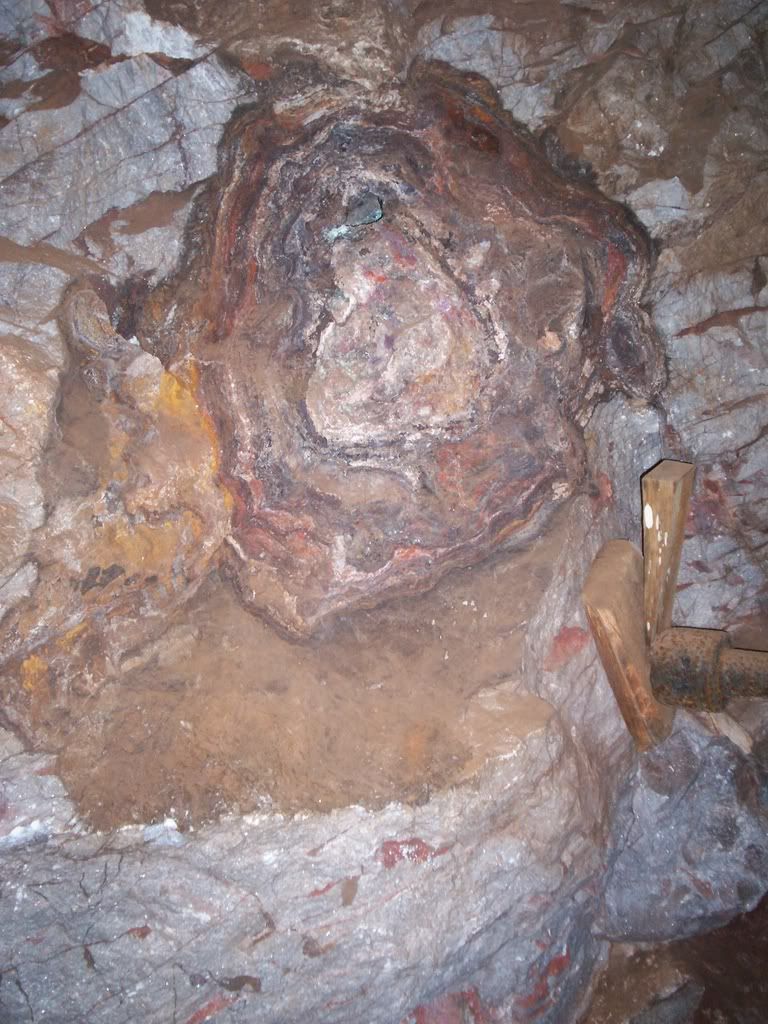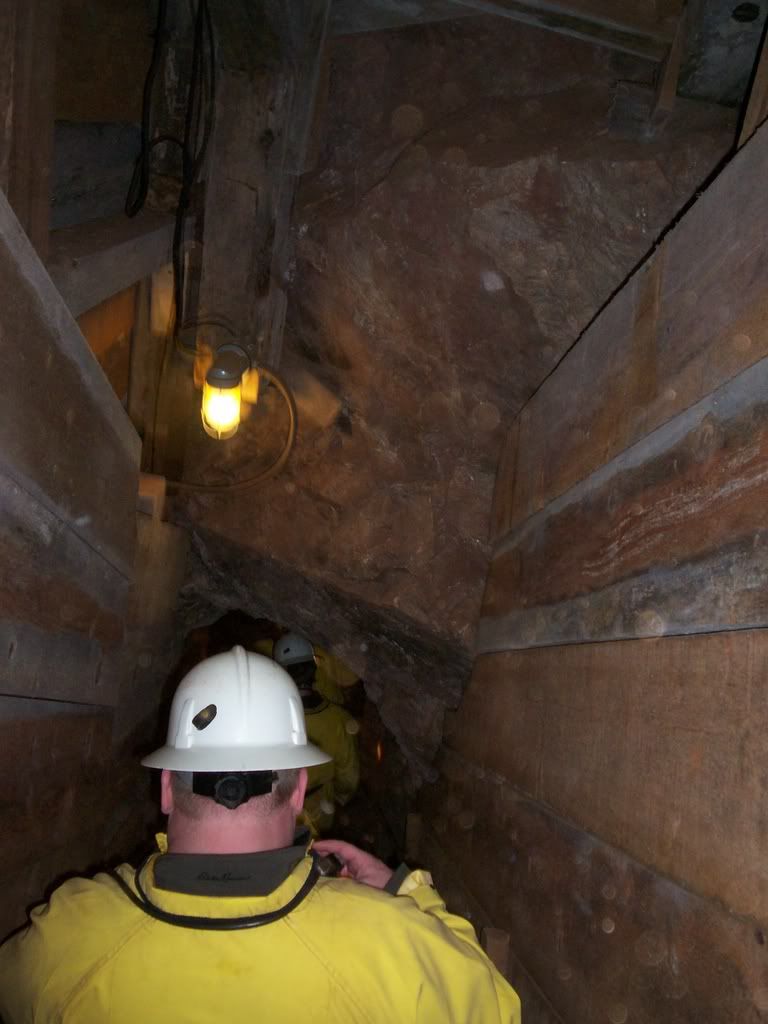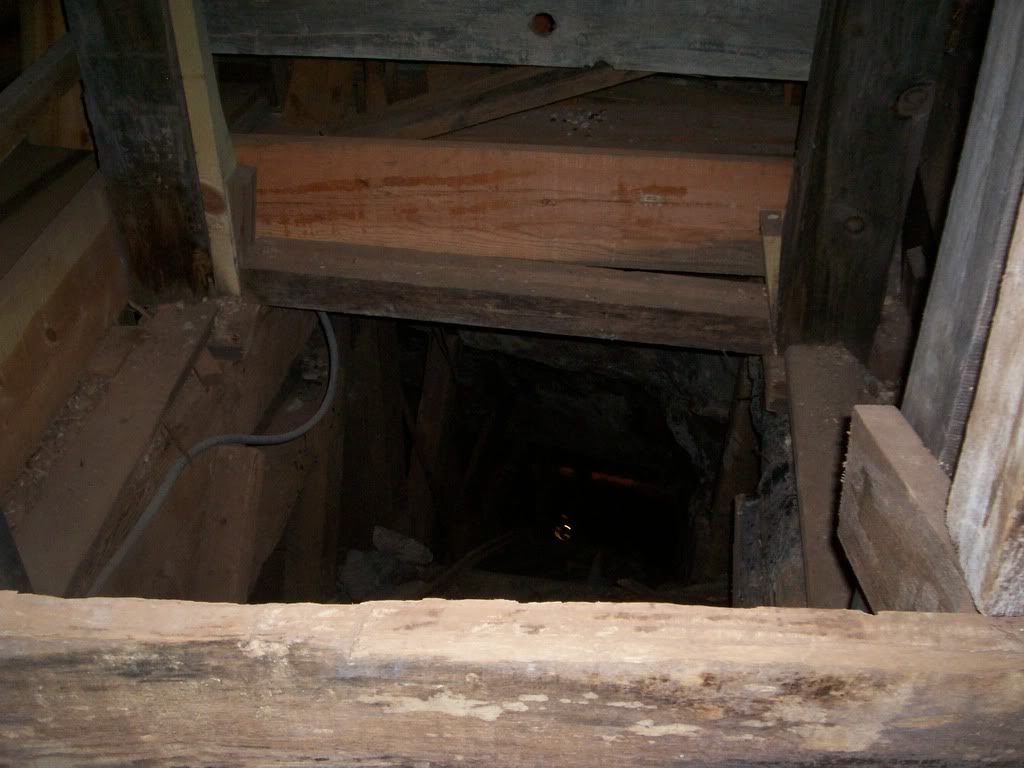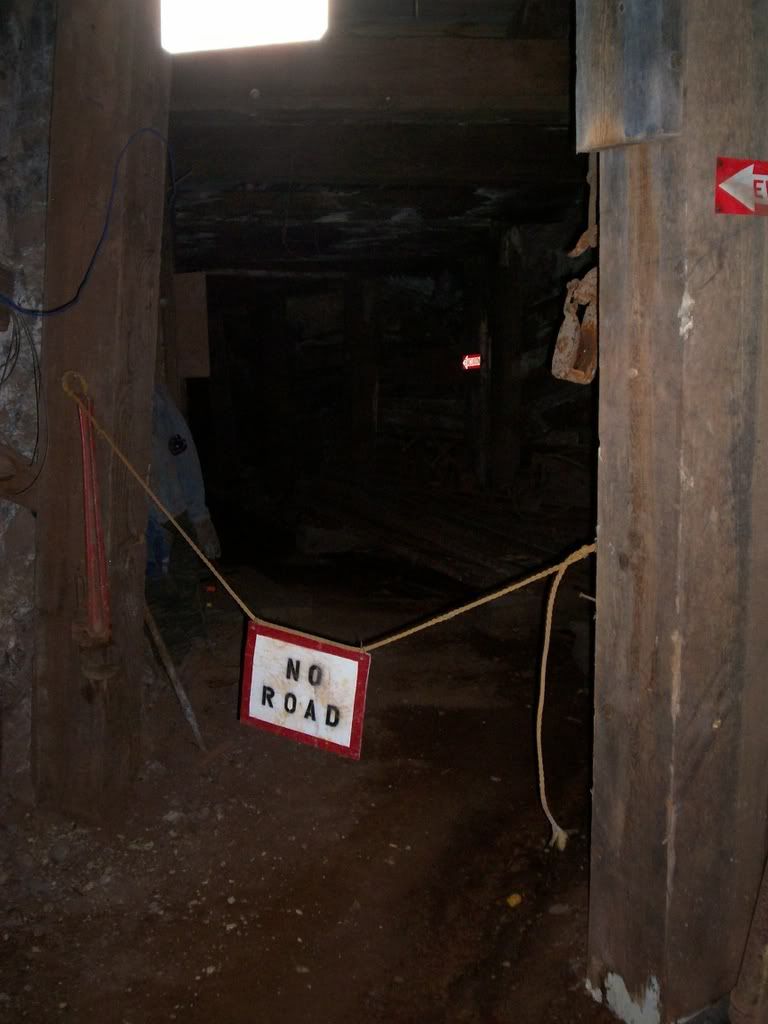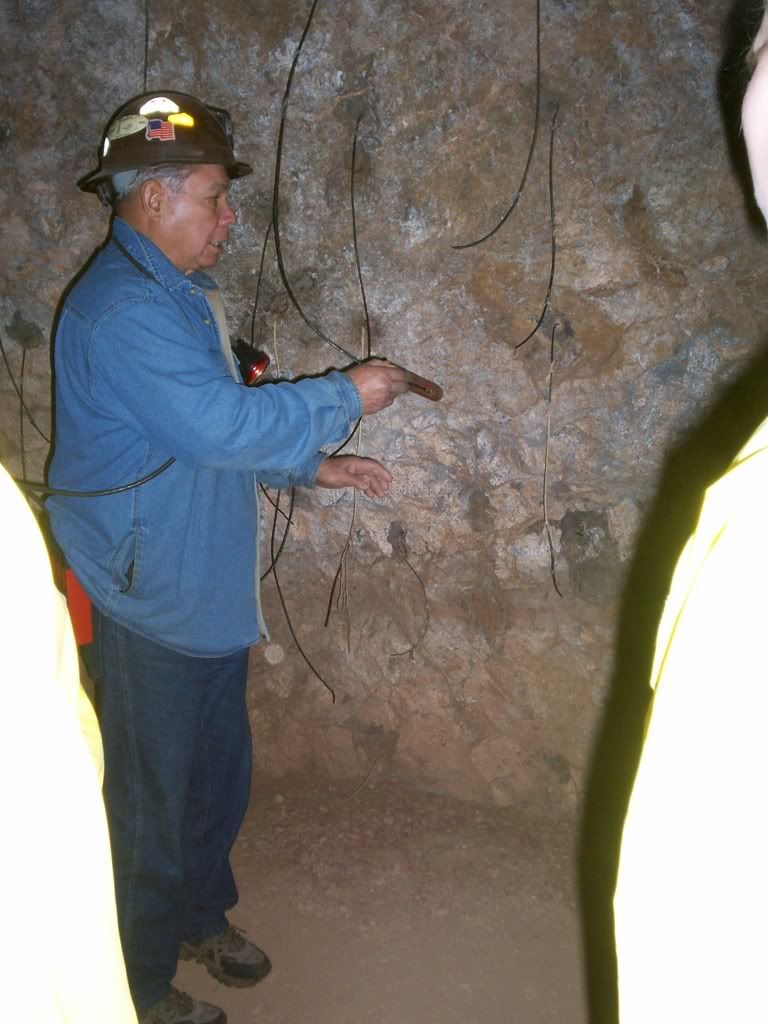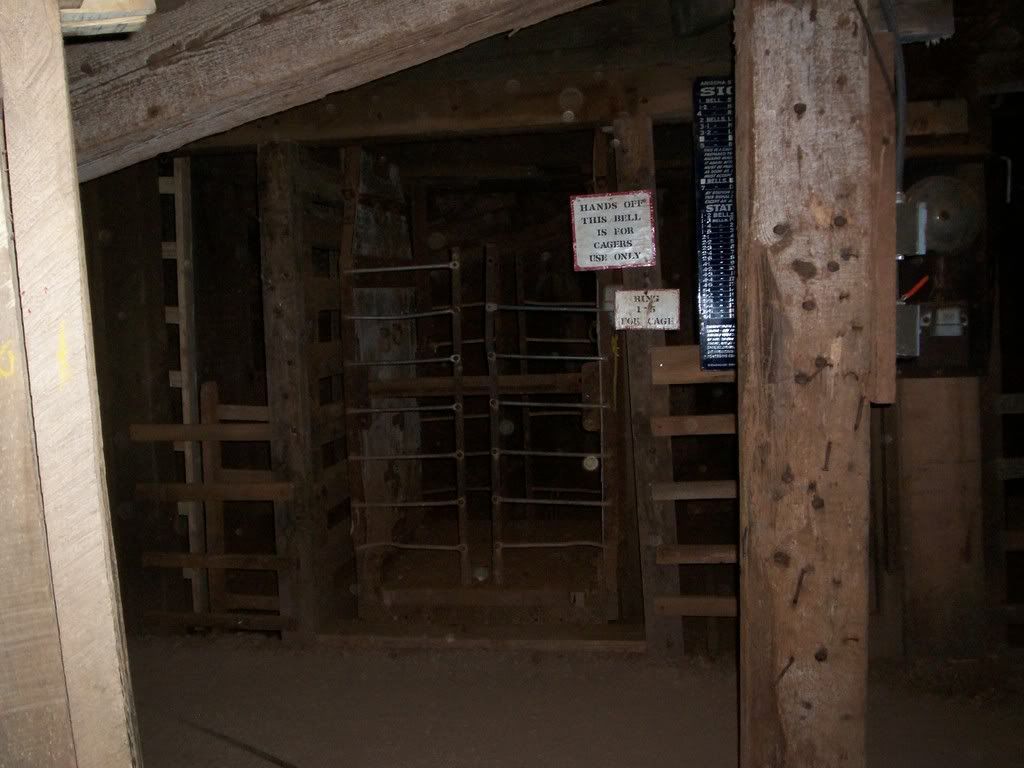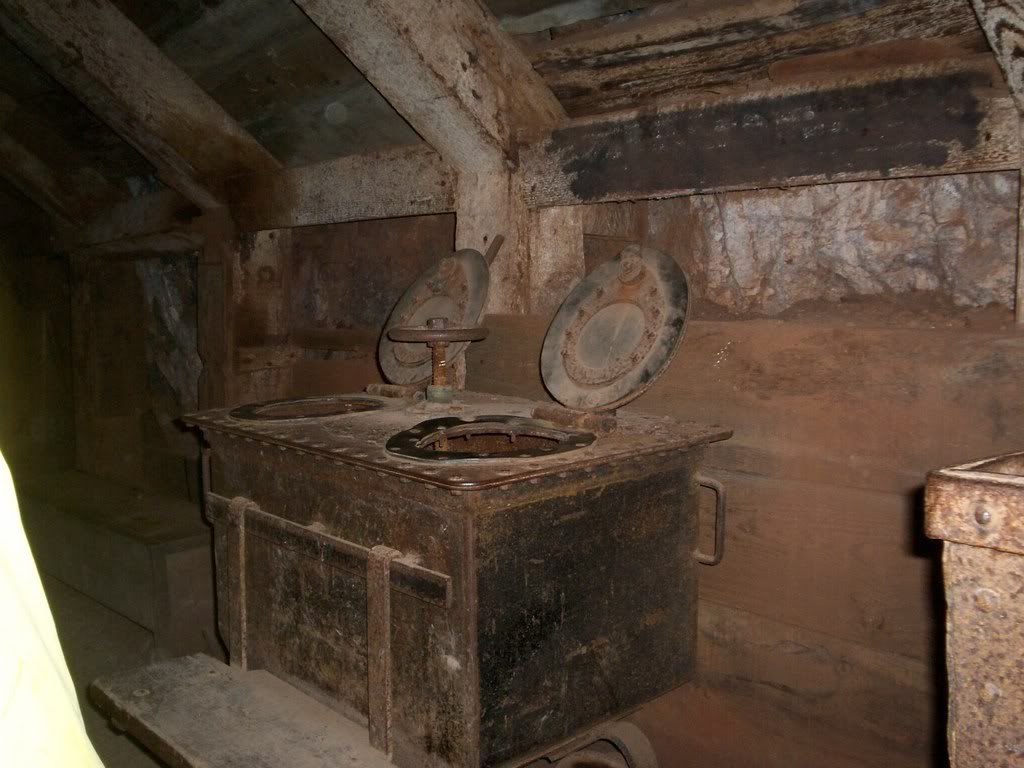Here's the second post on my recent Arizona trip. Unfortunately, most of the rest of my trip was spent engaging in (gasp) work. Most touristy type activities close before 5pm which is usually before I was off work. But I did manage to have a little bit of fun here and there.
Link to part one. (visits to Kratchner State Park & the Queen Mine Underground Tour)
Teaser picture: Arizona sunset....
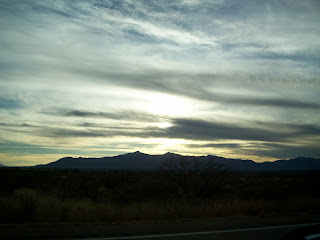
In full post I discuss: The Lavender Pit Mine in Bisbee, On the Road to Agua Prieta, La Frontera, Tombstone, and Tucson Hotel Decoration.
I had to drive through Bisbee a couple more times when going to the border and back to my hotel. Totally aside from the mines, there's some fabulous scenery. North of Bisbee the hills aren't as colorful but at sunset, the exposed rock practically glows.

There's also a short tunnel through a hill:
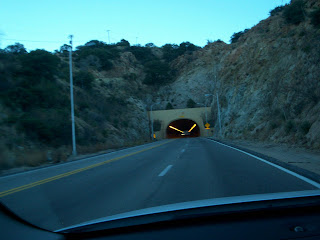
Back in Bisbee, on the other side of the mountain from the mine tours, there’s the old pit mines. The mountains of either side of the road become Technicolor:
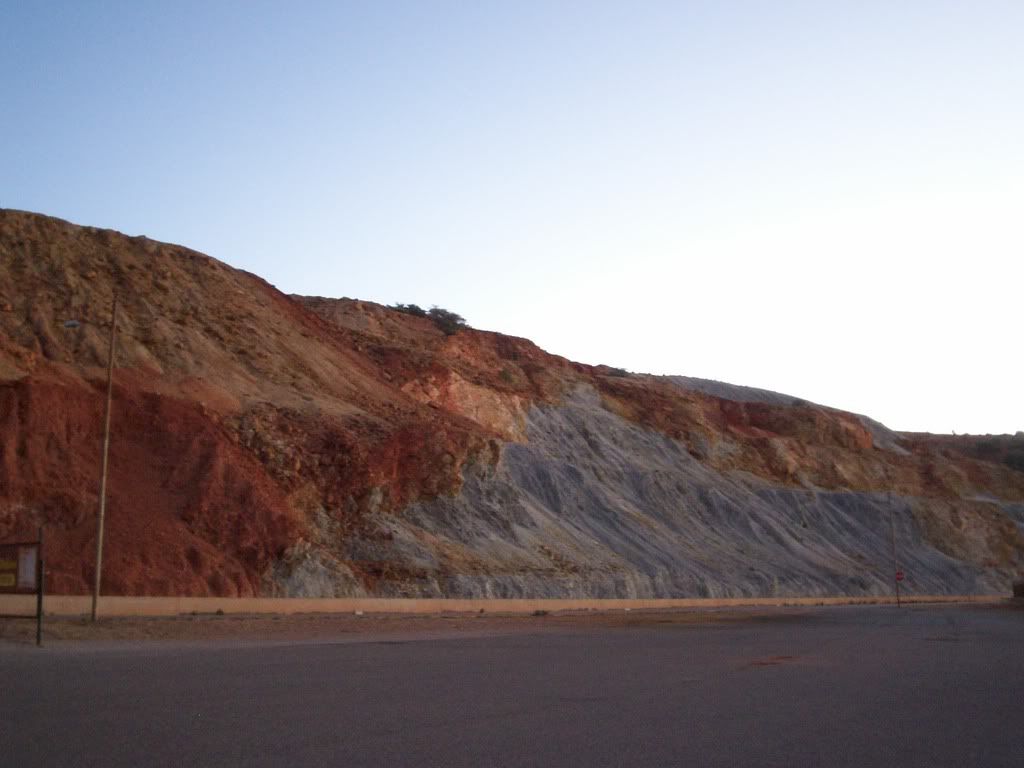
The pit mine is actually two pits. The largest is called “The Lavender Pit”. One cool thing: when you’re driving on 80-South, Bisbee has a scenic view on the side that looks over the main pit. Unfortunately, someone's vandalized the historical plaque:
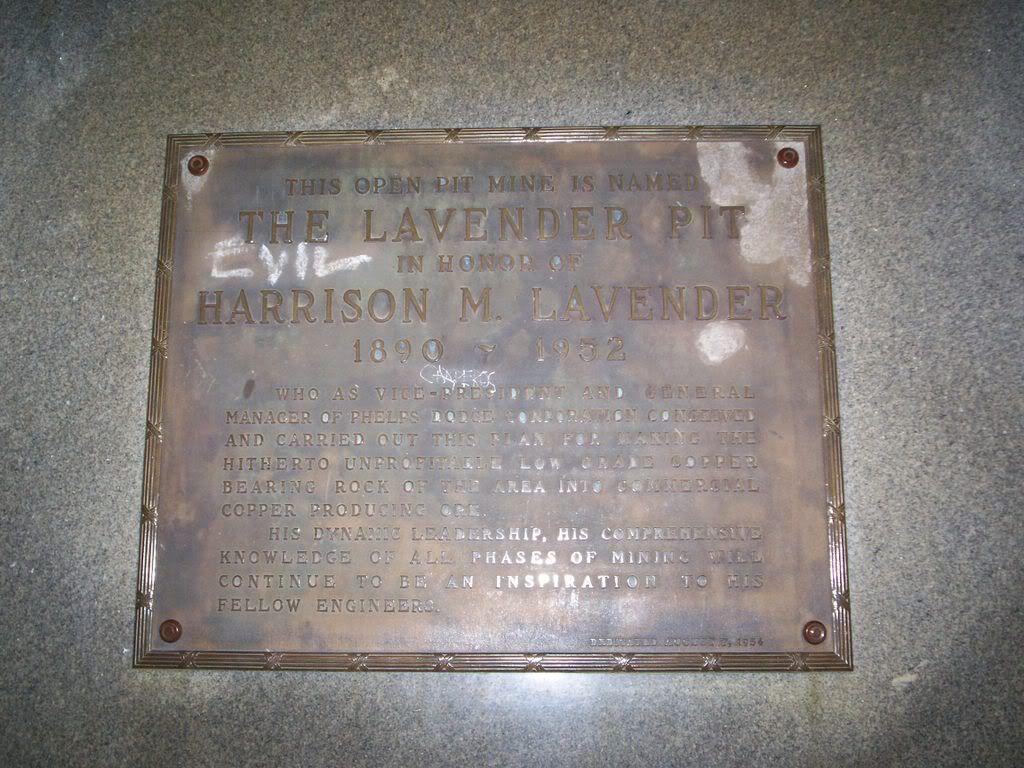
Ugh, punks.
Aside from that, the scenic view is really nice. Whoever built it was considerate enough to have camera-sized holes cut into the chain link fence so you can get unobstructed pictures. And you do need that fence, less than 3ft past it the ground just drops away. I could only stop in the early morning on my way to the plant but it’s a truly majestic view:
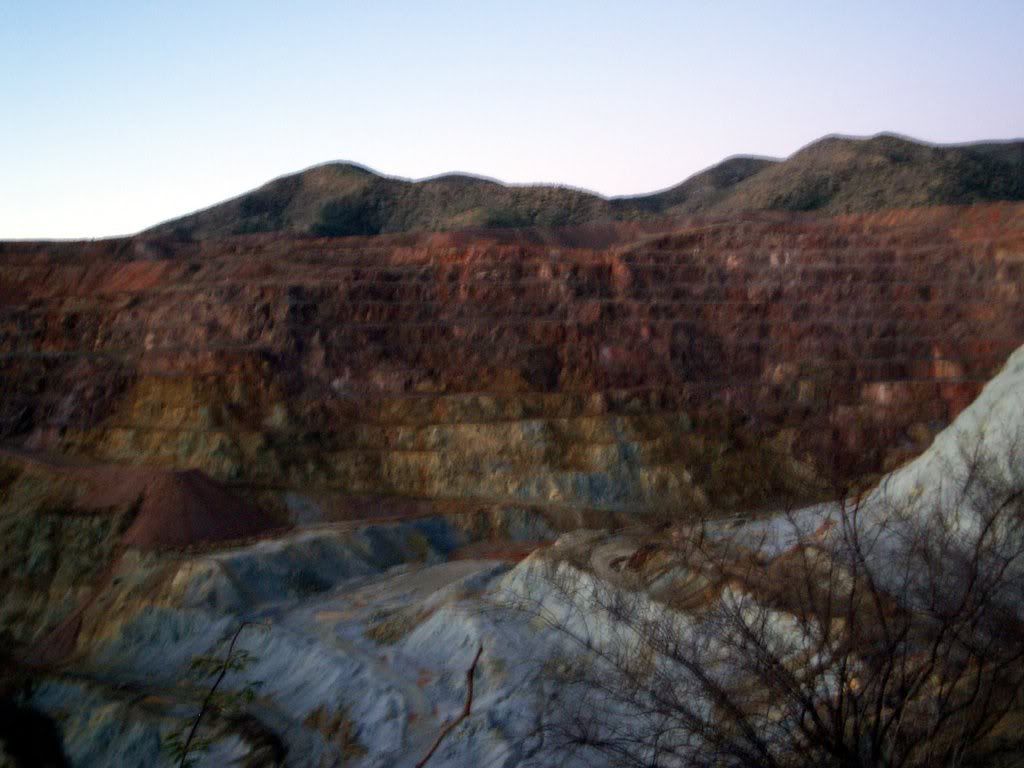
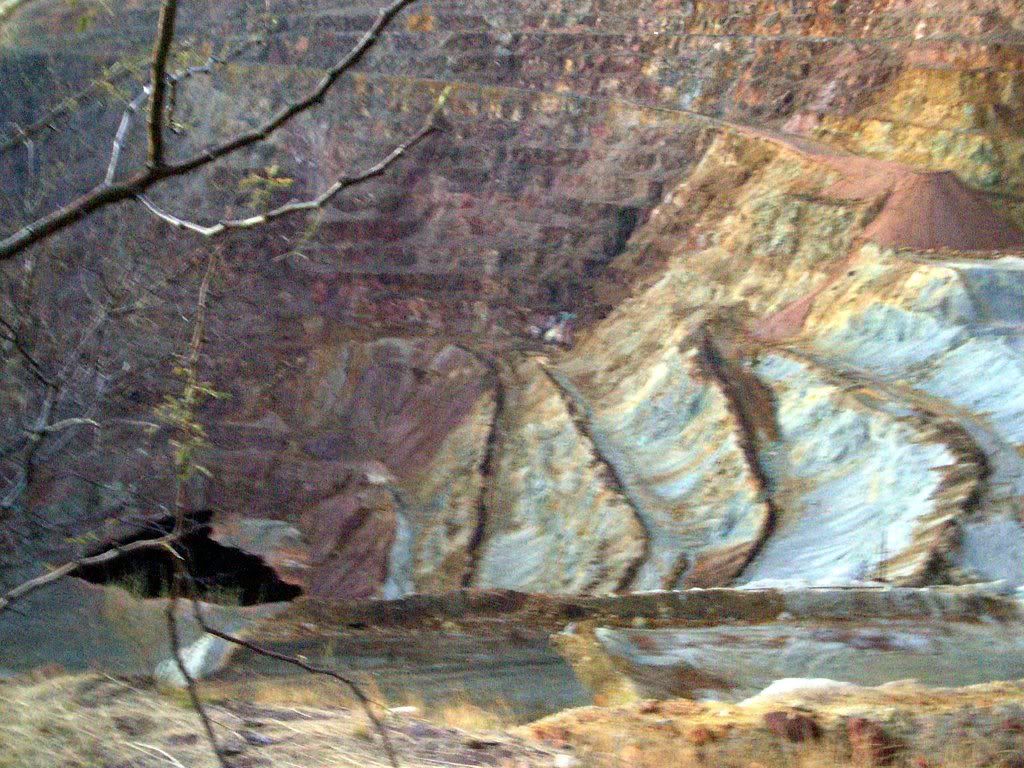
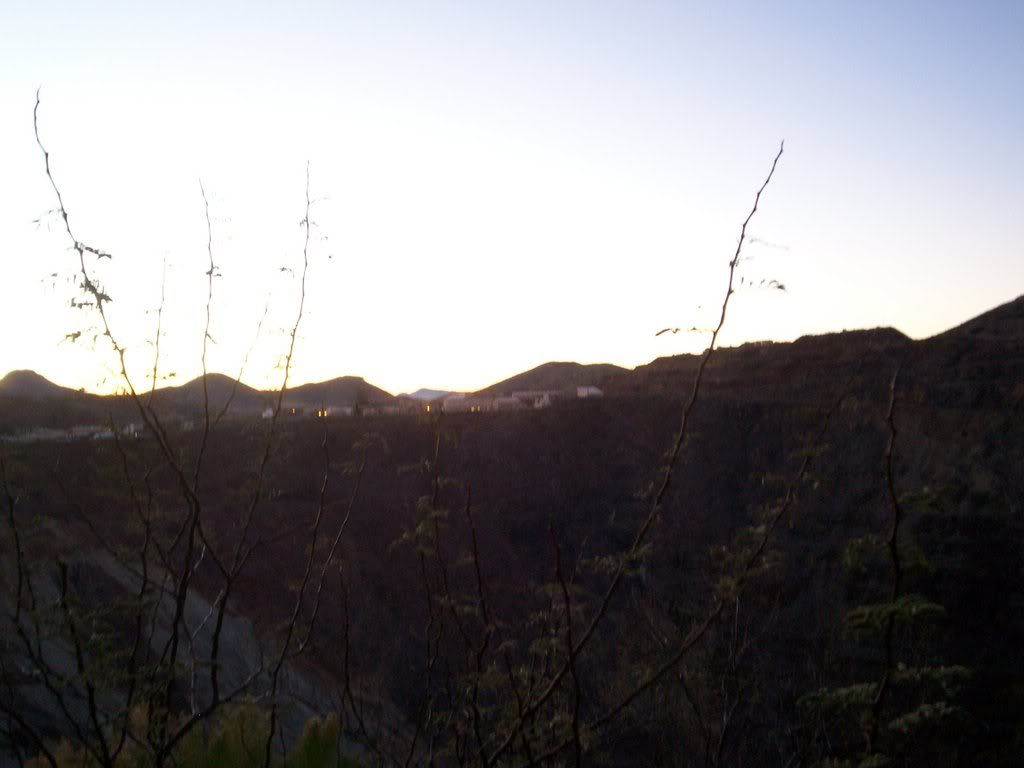
Note the size of buildings in the last picture. Sorry about the last one being so dark; the sun was rising behind the mountains and it overwhelmed the view a bit. Also, if you look at the first two photos in full size, they are a little blurry. My camera wasn't able to focus on the other side of the pit because the other side was too far away.
Across the highway and just past the Lavender Pit, three large semi-circular structures loom over the road.

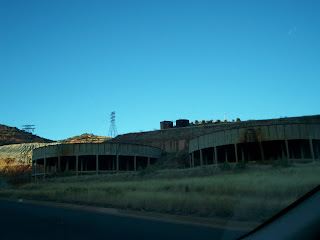
I think these are medium-old mine entrances, maybe from mid-1900s? They look too recent to be from the late 1800s and the style reminds me vaguely of WWII bunkers.
Also, in South Bisbee, there’s a round-about! These aren’t very common in the US and certainly not in rural areas so I was a bit surprised to see it.

On the way to Douglas after you get clear of the mountains around Bisbee, there’s a gravel production facility of some kind. They are basically grinding up one of the hills out there. Right now, the hill appears like a real-world section view:

Right off SH80 where I took the above photo, there's a historical marker:

As a Texan, it’s difficult for me to adjust to the fact that there is no natural boundary, like the Rio Grande between the USA and Mexico. When I crossed into AP, I reflexively had my money out for a toll bridge that does not exist in Arizona. There’s just a little light for Mexican Customs Inspections.
Honestly, would you believe this fence keeps people out?

Yeah, me neither...The lack of natural boundrary makes waiting in line at the border a bit surreal:
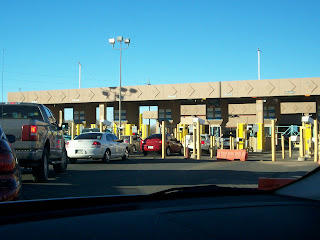
On the way back to Tucson, you can drive through the famous Tombstone. I wanted to get a picture of the OK Corral but it was dark by the time I drove through. Besides, the OK Corral is walled off.
Yep, the OK Corral is completely enclosed. My first thought was “They fenced in the OK Corral?! Blasphemy!” My second thought (imagine in a know-it-all tone): “Technically, it’s always been enclosed. That’s why it was called a corral.” And there’s a reason for the walls. There’s a reenactment show that reproduces the famous shoot-out inside the corral for tourists. I don't suppose they either want people injured or watching without paying.
Tired and a little bit sick of Arizona, my hotel in Tucson was a wonderful surprise. The patterns were just the sort of out-of-control madness I love. It was a nice pick-me-up. Here's the hallway carpet:
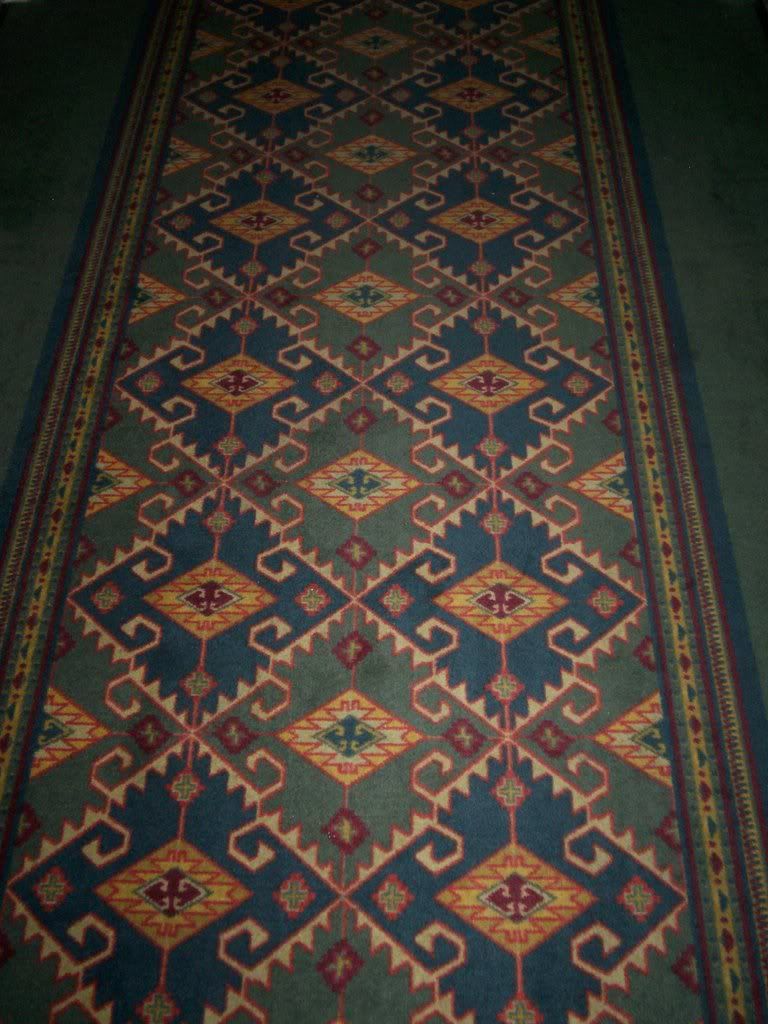
Even the elevators got in the action with a wild combination of textures:
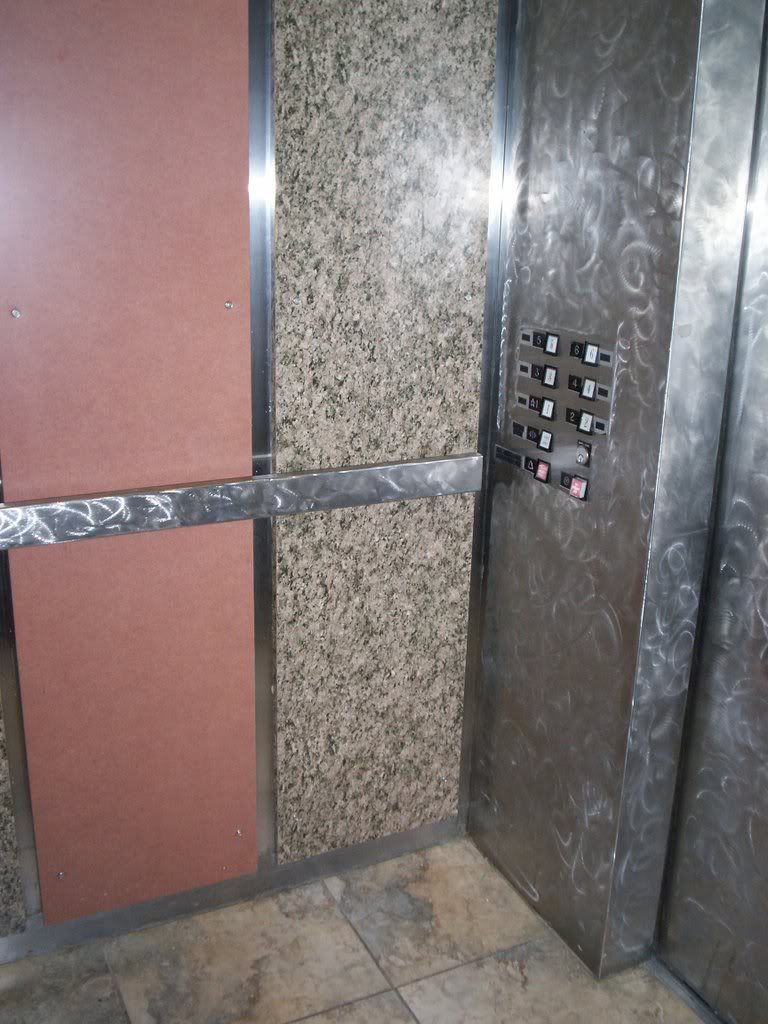
The hotel room had two different kinds of chairs. Easy chairs:

And the desk chairs:
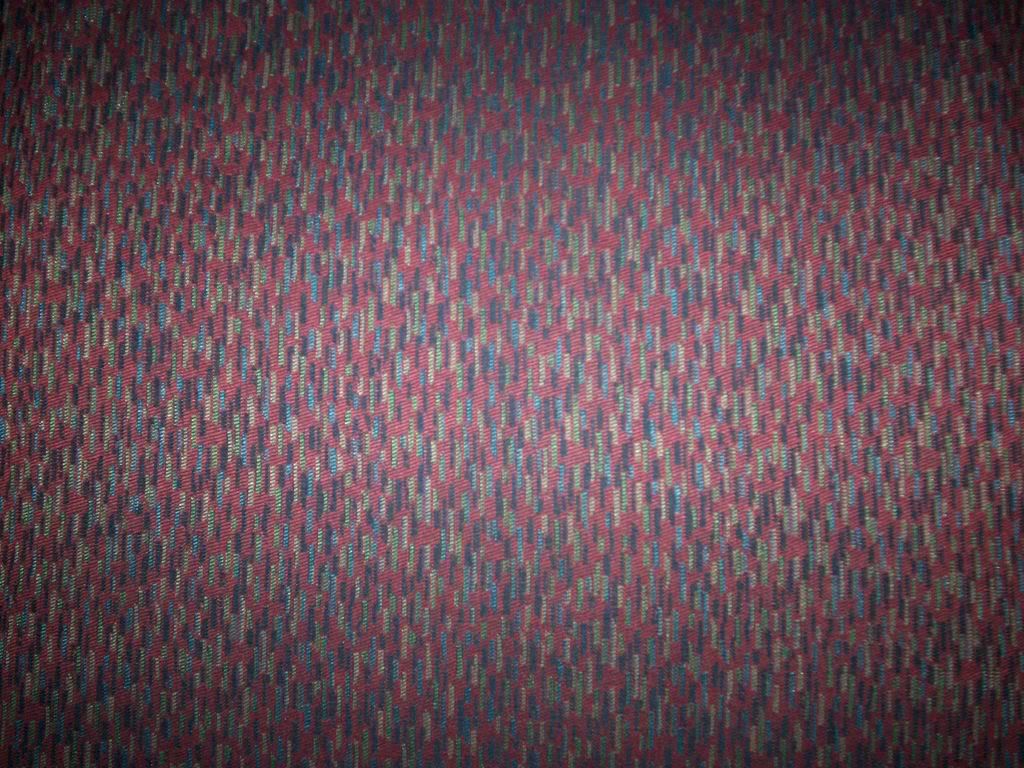
And finally, the bedspread

Needless to say, my collection of upholstery patterns is delightfully larger after this trip.
My flight out of Tucson was too early Friday morning for me to be snapping pictures. But, while waiting for my connecting flight in Dallas, I noticed something across the aisle:

This sucker's huge. You can literally walk through it!
An hour later, I was back in San Antonio. All in all, the trip was quite enjoyable as far as work-required travel goes.
Link to full post.






